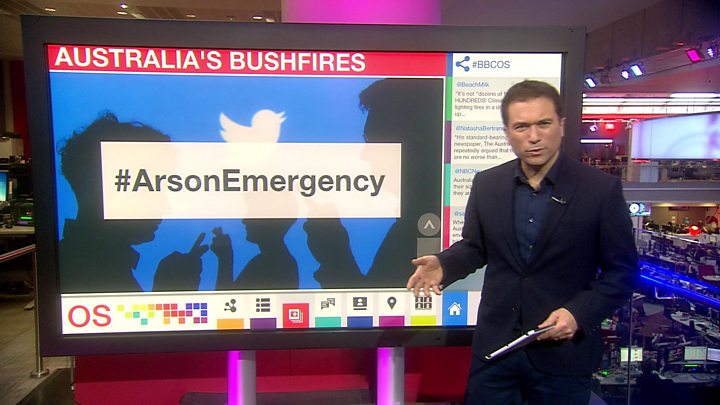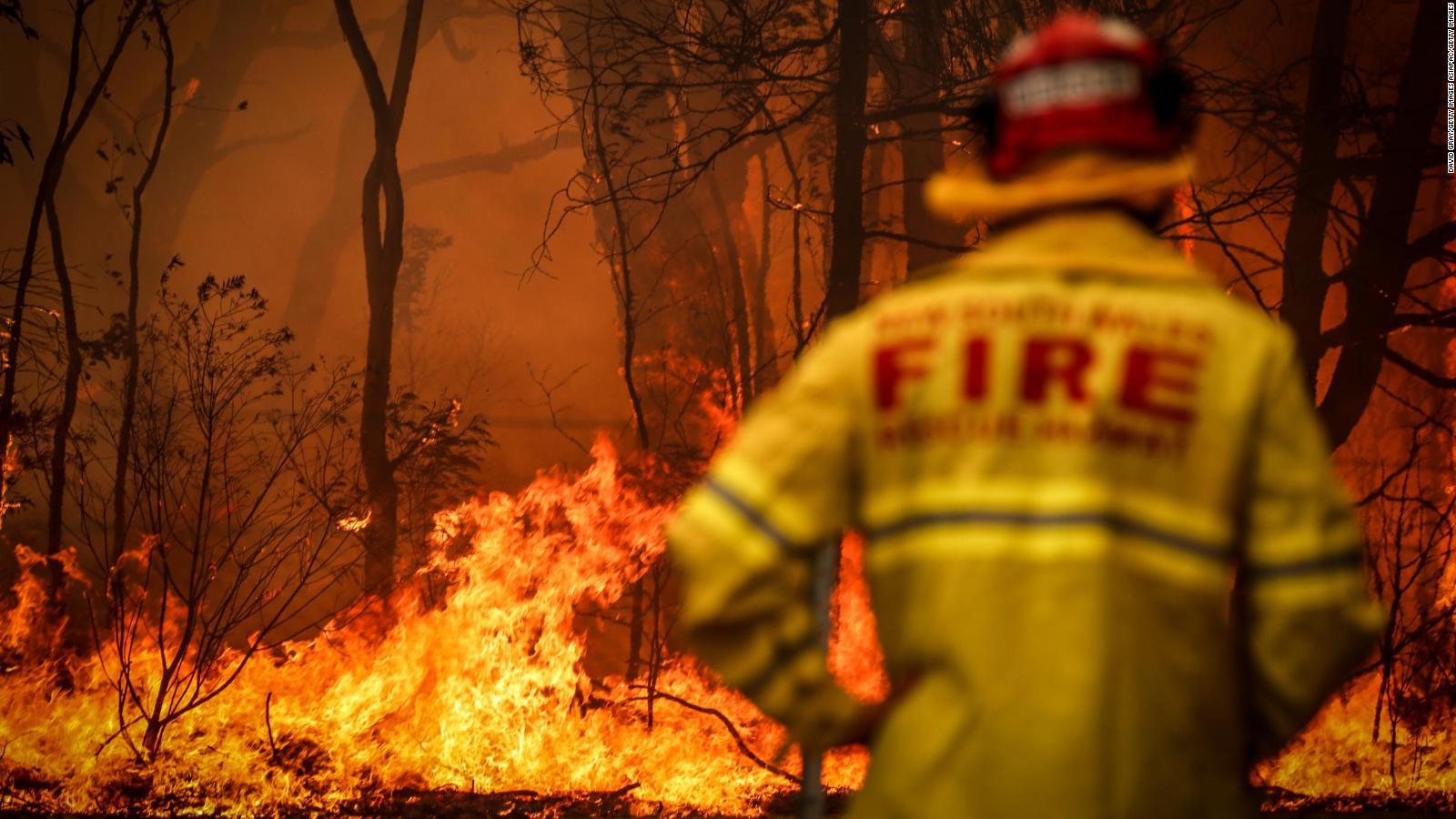As temperatures rise, Australia becomes more monochrome. In the ocean, the reefs have been whitening. On land, the forests have been blackening. Successive heat waves have forced corals to expel their colorful, nutrient-providing algae; half of the Great Barrier Reef has died. A near-unprecedented drought and exceptional temperatures—December saw Australia’s two hottest days on record—triggered the unusually intense bushfires that have incinerated almost 18 million acres of land. These disasters are vivid testaments to the consequences of climate change and the homogenizing effect of heat. A colorful realm of flora and fauna, one of the world’s most unusual, is slowly turning into a world of bleached reefs, charred bark, and sooty air.
In many cases, the catastrophes have undone years of work spent protecting species that were already imperiled. The Kangaroo Island dunnart, for example, is a mouse-size carnivore that lives only on the western edge of one southern island. With fewer than 500 individuals remaining, it was already critically endangered. Researchers had made important strides in monitoring it and planning for its future. But on December 20, lightning ignited a fire that burned half of the island, including the dunnart’s entire range. At least one has survived, but the dunnart’s future looks bleaker than ever. “We were a little more optimistic about this species a year or so ago,” says Rosemary Hohnen from Charles Darwin University, who has been working to save the dunnart for almost three years. “To go back to square one has been really awful.”
“Part of me thinks: Should we have known?” she adds. “Climate-change predictions suggested that catastrophic fires were going to happen and were going to become more frequent. But they’ve just never happened before at this scale.” The island last saw major bushfires in 2007, but the recent blazes have burned an area more than 12 times greater. They’ve even torn across farms and short-grass lawns, which don’t usually carry fires well. “Nobody foresaw over half the island burning,” Hohnen says. “And maybe we should have.”
Read: How long will Australia be livable?
Fire has been a recurring part of Australia’s landscape for millions of years, and many of its native species have adapted accordingly. Eucalyptus trees specialize in regrowing quickly after a blaze. Black kites, or firehawks, have been known to carry burning sticks to new locations to flush out small prey. Fire-seeking beetles use infrared-detecting pits to find infernos so that they can lay their eggs in charred wood. Other creatures that are less enamored of fire take precautions: Birds fly away and above, while small mammals burrow underground or shelter in tree hollows.
But when fires get big enough, birds get disoriented by the smoke and heat, while tree hollows transform from shelters into crematoria. That’s been the case in the recent season, as fires have been not only especially intense, but unprecedentedly thorough. Usually they burn patchily, creating a mosaic of scars that act as barriers to future flames and leaving behind unscathed vegetation that acts as nodes for rejuvenation. This season—again, due to unprecedented drought and heat—the fires have “brought down everything across the landscape in one fell swoop,” says Sarah Legge, an ecologist at the Australian National University. “That will make recovery harder.”
“There are also some habitats that are burning that we didn’t think should or would ever burn,” she adds. The subtropical rainforest on the border of Queensland and New South Wales “is not a flammable habitat. It’s evolved over many millennia without fire, and a lot of the species there aren’t resilient.”
The fires are especially devastating because they’re occurring against a long-running backdrop of biological annihilation. The clearing of land for agriculture and urban development has forced species into ever smaller and more fragmented pockets, which can be more easily snuffed out by a single bad event. Introduced predators such as feral cats and red foxes are already huge threats to native species but dine especially well in burned landscapes, where shelter is scarce. All the sins that have been visited upon Australia’s wildlife compound one another.
I wonder if we’re entering a new era of disaster-induced extinctions, in which beleaguered species can be more easily wiped out in one blow. That certainly happened to the Bramble Cay melomys, a rodent that lived on only one low-lying Australian island. Rising sea levels and repeated storm surges recently turned it into the first known mammalian casualty of human-caused climate change. The greater stick-nest rat may join it this summer, says Katherine Tuft of Arid Recovery, a conservation NGO. Its home, in what is already Australia’s driest region, has been hit by severe drought. With just three-quarters of an inch of rain falling in the past two years, the vegetation has run out of moisture, and the rats can survive for only so long.
Read: Australia will lose to climate change
None of the researchers I spoke with could think of a historical example where fire literally burned a species out of existence. Yet “it’s hard to imagine that there won’t be a number of extinctions as a result of this fire, but what that number is we aren’t sure,” Legge says. There are, however, several examples where fires caused extirpations—that is, they wiped out a species from a particular region.
Even when animals persist in parts of their range, local disappearances are huge blows to Aboriginal communities, each of which has a long-held and deeply felt relationship with its land and the animals and plants on it. These creatures are inextricable parts of their stories and cultural identities, and have significance and value at more granular and personal scales than population counts or range maps can show. Emus, for example, are in no danger of extinction, but if the coastal emus of northern New South Wales die in bushfires, “those animals are significant to me in my country,” says Oliver Costello, a Bundjalung man who founded and leads the Firesticks Initiative, which is working to revitalize indigenous fire and land management. “Australia doesn’t think, Okay, we’re going to lose emus, but we think we might lose our emus—and one of our key stories.”
That connection makes the fires particularly crushing. Entire populations of animals and plants that had totemic significance have been lost. Thousands of parent trees—dominant, centuries-old individuals that were elders in their ecosystem—have died. “The Aboriginal community is hurting right now,” Costello says. “We’ve lost millions and millions of hectares of our cultural values, our kinship, and our stories.”
Costello sees these losses as the culmination of centuries of colonization. Aboriginal communities have long set small fires to carefully manage their landscapes, creating food and habitat for animals, and producing scars that reduce the extent and intensity of fires during hotter periods. But colonizers suppressed this practice, whether through murder, regulation, or pushing indigenous people into missions and reserves where they were disconnected from their traditions. Following the loss of such practices, fires are now more frequent, intense, and extensive, and many small mammals have declined as a result. “The colonizing process disempowered people from practicing their own culture on their own land, and the animals and plants are the ones suffering the consequences,” Costello says.
The recent bushfires, however, have been so severe that some researchers and fire chiefs aren’t convinced that preventive burning would have helped. In some cases, such burns had already been carried out, and seemed to make no difference. On Kangaroo Island, for example, the fire even re-burned areas that had already been burned.
Regardless, everyone agrees that this bushfire season is unlikely to be a one-off calamity. Much like the recurrent heat waves that have pummeled the Great Barrier Reef, excessive fires may become the new normal. They might not be annual, though. So much land was so savagely burned this season that the next fires won’t likely be as far-reaching or intense. Conservationists will now spend the next months scrambling to find surviving pockets of endangered species, protect their remaining habitat, and defend them against the predators that will be inevitably drawn to burnt sites.
And what about the long term? What happens when catastrophes become significant enough that they can unravel years of good work in one blow? What happens when such risks go from being extreme, unforeseen events to regular, predictable ones? “The landscape is changing so rapidly,” Tuft says. “The conservation and scientific community needs to be very adaptive” and perhaps consider measures such as relocating animals from fire-prone regions to cooler or wetter habitats.
“I think it’s going to take a pretty fundamental shift in what we consider to be normal, or even possible,” Hohnen says. “If fires of this scale are going to happen every few years, or even every 10 years … it’s going to be really hard.”
“We need to do something about climate change,” she adds.
We want to hear what you think about this article. Submit a letter to the editor or write to letters@theatlantic.com.
Ed Yong is a staff writer at
The Atlantic, where he covers science.
Let's block ads! (Why?)
https://news.google.com/__i/rss/rd/articles/CBMib2h0dHBzOi8vd3d3LnRoZWF0bGFudGljLmNvbS9zY2llbmNlL2FyY2hpdmUvMjAyMC8wMS9hdXN0cmFsaWFzLWZpcmVzLWhhdmUtYmVlbi1kZXZhc3RhdGluZy1mb3Itd2lsZGxpZmUvNjA0ODM3L9IBL2h0dHBzOi8vYW1wLnRoZWF0bGFudGljLmNvbS9hbXAvYXJ0aWNsZS82MDQ4Mzcv?oc=5
2020-01-14 12:00:00Z
CAIiEEeSL1R24vHIabfLlqEbVKsqFggEKg0IACoGCAowm_EEMKAiMOfsywM






